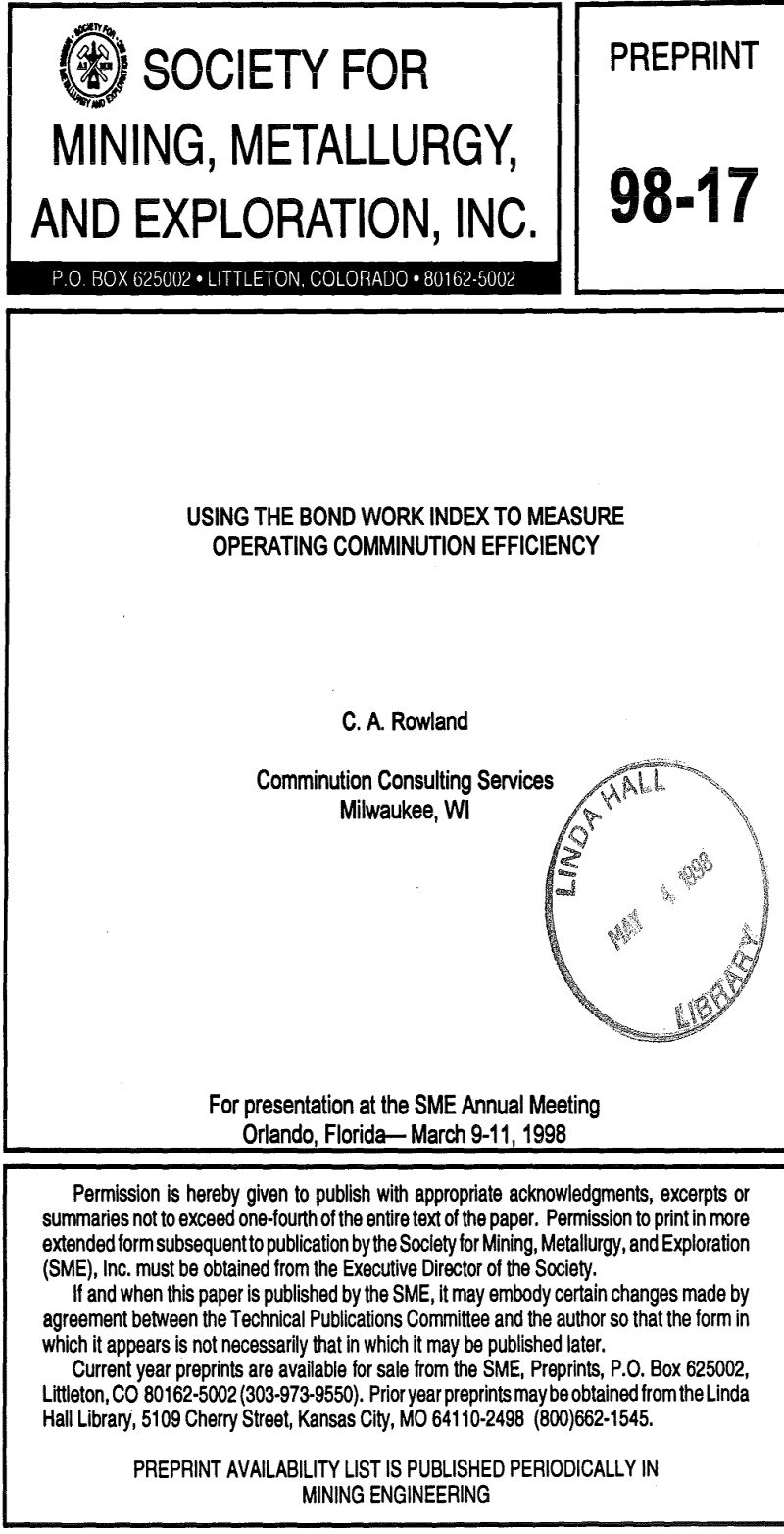Comminution efficiency can be expressed in three different ways.
Theoretical Efficiency: actual energy consumed, in a comminution machine compared to the theoretical energy required to make the size reduction.
Operating Efficiency: compares the operating work index, calculated from production comminution machinery operating data, to the Bond Work Index from bench scale comminution tests or calculated from pilot plant operating data.
Economic Efficiency: income compared to planned income. Using the Bond Work Index and operating work index, this paper explains how to determine operating efficiency.
Operational Efficiency
Bond Work Indicies obtained from bench scale crushability and grindability tests or from pilot plant tests are used in the Bond Equation to determine the energy required to produce the required size reduction in comminution circuits. The Bond Equation is:
W = 10Wi/p0.5 – 10Wi/F0.5
Where:
W = kwh per short ton.
Wi = Work Index determined from crushing and grinding tests.
P = The size in microns (micrometers) that 80% of the product is finer than.
F = The size in microns (micrometers) that 80% of the feed is finer than.

Where:
Wio = Operating Work Index as kwh per either short ton or metric tonne.
W = Measured power in kwh per either short ton or metric ton.
P = The size in microns (micrometers) that 80% of the product is finer than.
F = The size in microns (micrometers) that 80% of the feed is finer than.
As the diameter of rod and ball mills increased and the number of installations increased, studies comparing operating work indices to work indices from grindability tests were made. Eight factors, renamed Efficiency Factors (EF) were identified.
EF1 Dry Grinding multiplier: 1.3.
EF2 Open Circuit factor: depends upon the amount and size of particles coarser than the specified product size.
EF3 Mill Diameter factor: using 2.44 meters (8.5ft.) as the base diameter, grinding efficiency varies as the ratio of the mill diameters raised to the 0.2 power, up to mill diameters of 3.96 meters (13ft) and greater, where it becomes a constant.
EF4 Oversized Feed factor: there are optimum feed sizes for rod and ball mills. When the feed is coarser than the optimum, an inefficiency occurs, the degree of which depends on the degree of the coarseness of the feed.
EF5 Fineness of Ball Mill Grind: when grinding finer than 80% passing 200 mesh (75 microns) in a ball mill, as the size of grind becomes finer, it becomes increasingly inefficient.
EF6 High or Low Ratio of Reduction Rod Milling: there is an optimum range of ratios of reduction for rod milling, outside of which an inefficiency exists.
EF7 Low Ratio of Reduction: in Ball Mills: when the ratio of reduction in ball milling is less than 6 an inefficiency occurs.
EF8 Rod Milling: this allows for changes in mill performance as the rods and mill liners wear from a new charge and liners to a worn-in charge and liners.
These Efficiency Factors can be applied to the power per ton as calculated using the Bond Equation, or to the work index from crushing and grinding tests or to the operating work index. When comparing operating work indices to work indices from test data the EF factors should be applied to one of the work indices to put both of them on the same basis, thus equalizing the variables, covered by the EF factors, in the comparison.

